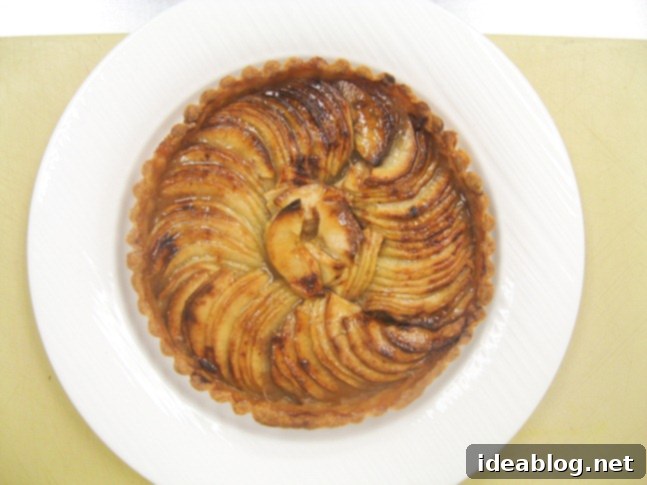A Culinary Journey: Mastering Gourmet Dishes and Excelling in the Market Basket Challenge
The intensity of culinary school reached new heights on a particularly memorable Thursday. Typically, our daily objective is to meticulously prepare a three-course lunch within a stringent production window, usually around two hours. However, this day presented an elevated challenge: a four-course menu. This meant an even greater volume of intricate dishes had to be conceived, prepped, cooked, and plated to perfection, all while adhering to the same demanding time constraints. It was a true test of our efficiency, organization, and culinary skills under pressure.
Crafting the First Course: Exquisite Tuna Tartare with Asian-Inspired Flair
Among the ambitious lineup, the first course stood out as a personal highlight, igniting a genuine sense of anticipation. We were tasked with preparing tuna tartare, a dish I had only encountered once before but whose primary ingredient—raw tuna—I have always adored. Its inherently buttery texture and rich, fresh flavor make it a truly luxurious ingredient. Our entire class had the privilege of working with a magnificent center-cut of #1 Sushi-grade tuna tenderloin. This substantial piece of fish, weighing approximately seven pounds and valued at around $140, was a testament to the quality of ingredients we were learning to handle and respect.
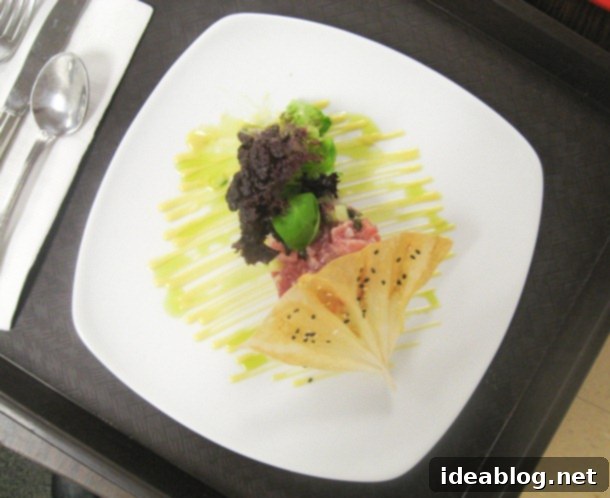
The preparation of the tartare itself was a symphony of precision and last-minute assembly to ensure ultimate freshness. All the accompanying ingredients were prepped in advance: cucumbers, capers, and red onion were finely diced. The pristine tuna was also diced with careful precision and kept chilled on a bed of ice, preserving its delicate texture and vibrant color. Just before plating, these components were gently combined with a blend of subtle Asian flavors—a whisper of wasabi powder, a bright squeeze of lemon juice, and a drizzle of aromatic sesame oil. This imparted a nuanced, refreshing profile to the dish.
To complement this, we also incorporated a classic Dijonnaise sauce, a rich and creamy emulsion of Dijon mustard, high-quality olive oil, and a touch of Worcestershire sauce. This added a welcome piquant kick and a crucial acidic balance to the rich tuna. The artistry extended to the plating, where additional drizzles of this vibrant Dijonnaise adorned the plate, alongside a few delicate drops of Thai basil oil. This exquisite oil, with its unique herbaceous notes, had been expertly prepared by Chef Patrice during the morning’s demonstration, showcasing the attention to detail in every element of our dishes.
Innovative Garnish: Edible Feuille de Brick Fans
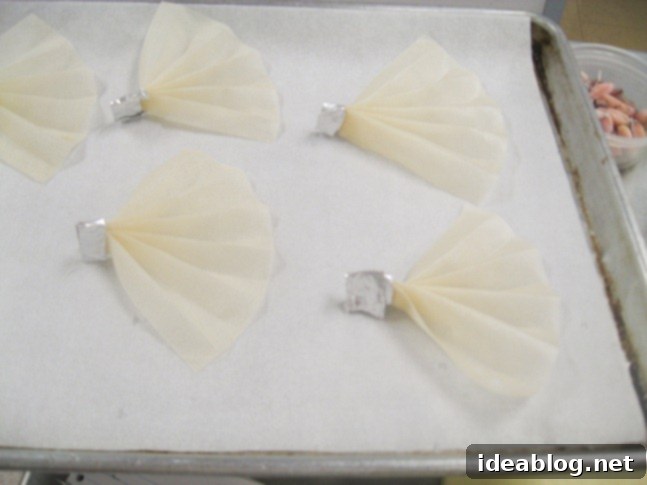
For a truly creative and visually stunning Asian-inspired garnish, we crafted delicate “paper fans.” These were fashioned from feuille de brick, a Middle-Eastern pastry known for its paper-thin sheets, somewhat similar to phyllo dough but with a slightly less delicate handling. We meticulously cut these sheets into small rectangles and then carefully folded them into elegant fan shapes. To maintain their form during baking, we secured one end with a tiny piece of aluminum foil. A light brush of egg wash provided a beautiful sheen and helped a mixture of white and black sesame seeds adhere, adding both color and a subtle nutty crunch. These intricate fans were then baked to a perfect golden brown, transforming them into a delightful, edible accompaniment that was both fun to make and impressive to behold.
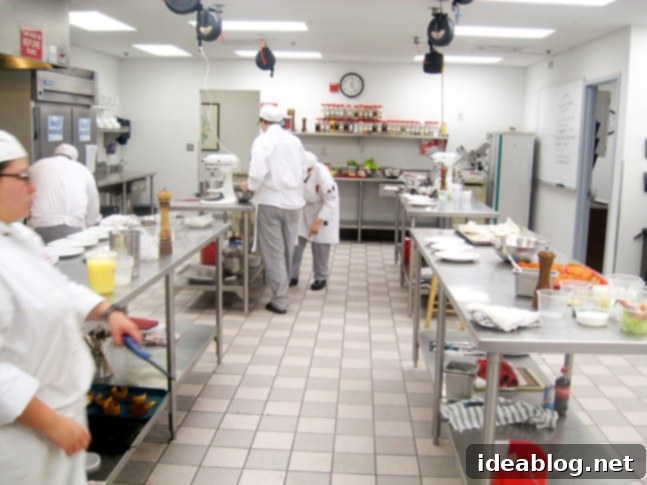
Exploring Exotic Flavors: Fried Frog Legs with Gribiche Sauce
Our second course pushed the boundaries of my culinary comfort zone, presenting another entirely new experience: fried frog legs. These were served with a vibrant gribiche sauce—a rich mayonnaise-based emulsion brimming with chopped capers, cornichons, hard-boiled egg, fresh parsley, and a bright squeeze of lemon juice. A small, refreshing pickled carrot and fennel salad provided a crisp, acidic counterpoint to the richness of the fried frog legs.
Interestingly, while many people strongly associate frog legs with French cuisine, our Chef Patrice shared an intriguing insight: he rarely encountered them during his upbringing in France. This led me to ponder if it might be more of an American-French adaptation, which I found quite fascinating. Historically, the thought of eating frog legs had always given me a slight pause. However, after experiencing various other unique ingredients in culinary school—such as calf’s liver, sweetbreads, and caul fat—the idea of frog legs now seemed relatively conventional. In fact, I harbored a secret excitement to finally try them!
Witnessing the frog legs in their packaged form during production was a unique moment. I must admit, there was a fleeting sense of sadness at seeing these small creatures. Their incredibly strong muscles, a testament to their leaping and jumping prowess, were quite remarkable to observe.
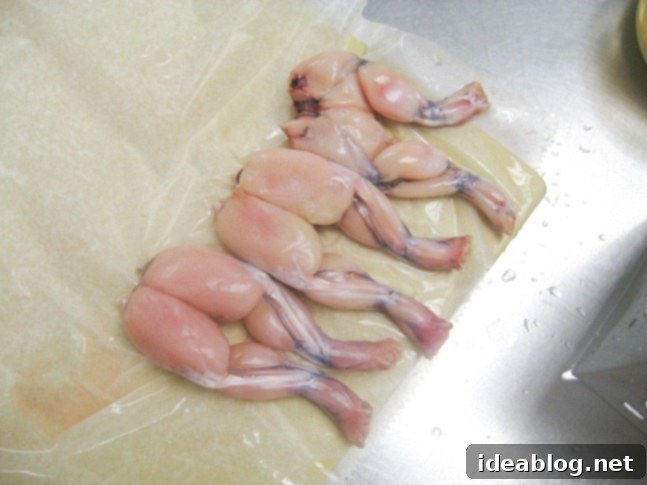
The preparation involved a technique known as “frenching” the bones, which meant carefully removing the calf meat from the lower portion of the leg to expose the bone, creating a clean, handle-like presentation. This meticulous process transformed the frog legs into elegant “lollipops”—a playful and refined way to serve them. We coated them in a light, crispy batter composed of semolina, whole wheat flour, and a touch of baking powder, among other ingredients, ensuring a golden-brown, satisfying crunch upon frying.
While delicious, I’m not sure I’d opt for a large quantity of them in one sitting. The texture was quite unique, somewhat akin to rabbit—firm yet tender, and difficult to precisely articulate. What was most surprising, however, was their incredibly mild flavor; they don’t possess a distinctive taste of their own, making them an excellent canvas for accompanying sauces and seasonings.
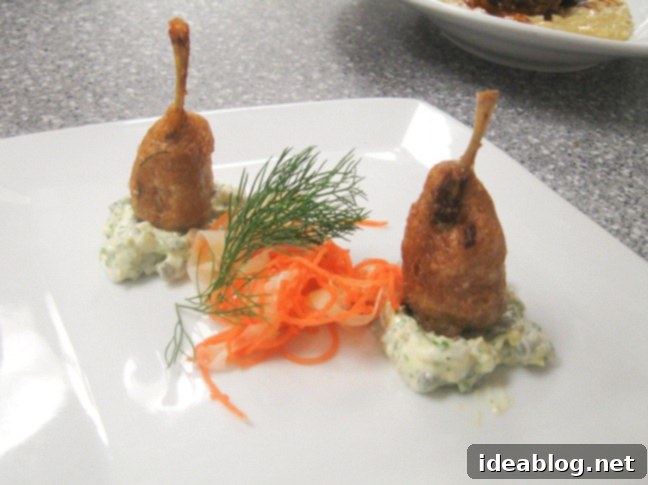
The Main Event: Succulent Braised Veal Cheeks
Our main course for the day was a hearty and comforting dish: braised veal cheeks. These cuts of meat were slow-cooked to an extraordinary tenderness, reaching a point where they could literally be cut with a plastic spoon – a testament to the effectiveness of the braising technique. They were served alongside orzo pasta, which we prepared in a manner similar to a creamy risotto, lending a delightful richness and texture to the plate. While the dish was undoubtedly flavorful, I found myself contemplating my true affinity for veal cheeks. Despite rigorous trimming prior to preparation, their texture remained notably gelatinous and, somewhat surprisingly, quite fatty. It was an interesting exploration into a less common cut of meat, offering both rich flavor and a unique mouthfeel.
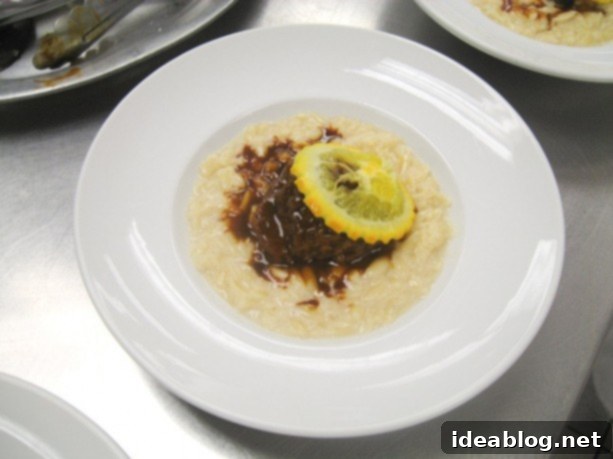
A Sweet Ending: Classic French Apple Tart
To conclude our four-course culinary marathon, we presented a classic and timeless dessert: a traditional apple tart, or Tarte aux Pommes. For reasons unknown, apple-based desserts seemed to be a frequent feature in our curriculum lately, a trend I thoroughly enjoyed. I have a particular fondness for fruit-centric desserts, especially rustic and wholesome tarts such as this one, which celebrate the natural sweetness and texture of the fruit.
This specific apple tart distinguished itself from many we had prepared previously. Unlike most tarts that call for blind-baking the crust, this recipe omitted that step. This is characteristic of tarts traditionally baked in a deck oven (or, for home cooks, on a pizza stone) for an unusually long duration—nearly 2 to 2 1/2 hours. While this baking time sounded incredibly extensive, it was precisely the method we followed, allowing the apples to slowly caramelize and meld with the crust. The filling itself was wonderfully simple: crisp Granny Smith apples, cored, peeled, and sliced extremely thinly, layered with small tabs of butter, a generous sprinkling of sugar, and a hint of ground cinnamon. Although cinnamon isn’t a classic French ingredient in Tarte aux Pommes, we added it to enhance the overall flavor profile, creating a comforting aroma and taste.
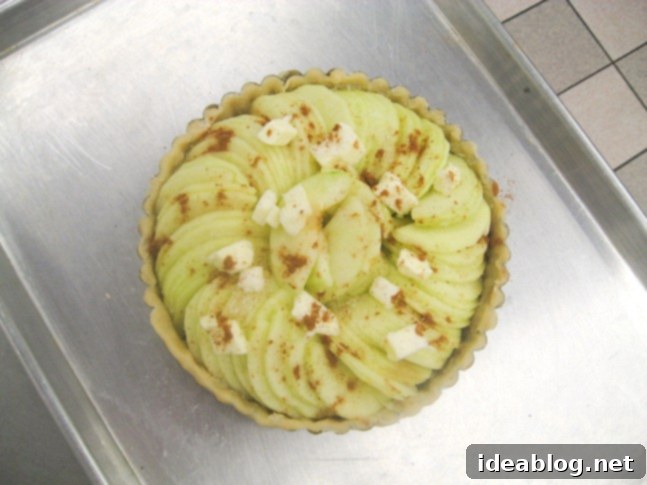
After such an extended period in the oven, the apples transformed into an incredibly soft and tender consistency, their natural sugars concentrating and creating a deeply satisfying sweetness. The crust achieved a beautiful crispness, providing a perfect textural contrast. It was truly delicious; a dessert so appealing, I could have easily indulged in several slices.
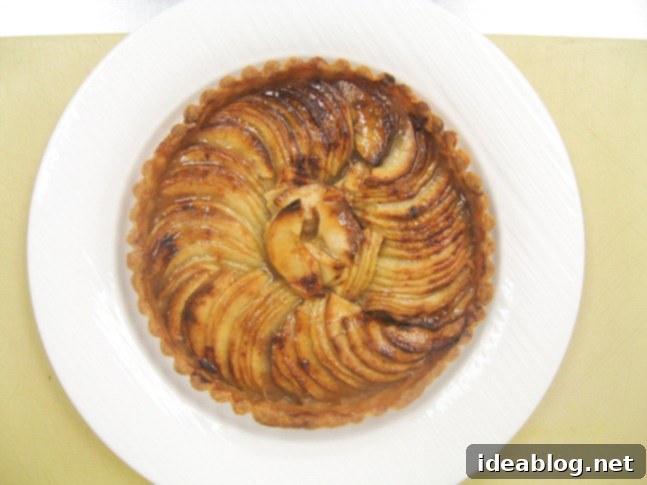
The Ultimate Test: The Market Basket Challenge
Following a fast-paced and highly productive day of cooking, our afternoon shifted focus to preparation for the next day’s exciting Market Basket challenge. This unique assignment involved a surprise set of ingredients that we had to creatively transform into a coherent menu. Our core ingredients were announced: veal and shrimp. With an early dismissal scheduled for Friday due to Memorial Day weekend, our task was streamlined to just two courses—an appetizer and a main—and we had the freedom to integrate the ingredients in any way we chose. Personally, neither veal nor shrimp were ingredients I felt particularly enthusiastic about at first glance. However, after extensive brainstorming with my partner, Kevin, we devised a menu that, we hoped, would impress.
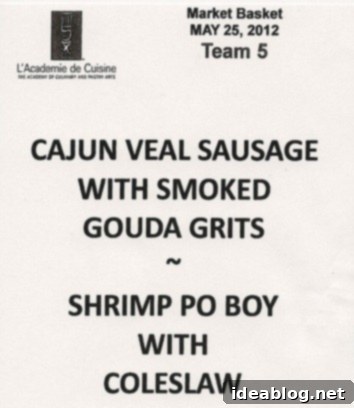
Adding another layer of pressure to the challenge was the presence of a distinguished visiting judge, Chef Jason Maddens. As the Executive Chef at Central, a highly acclaimed Michel Richard restaurant in Washington D.C., Chef Maddens brought a wealth of experience and a discerning palate. Notably, he was also a graduate of L’Academie, our own culinary institution, which elevated the stakes considerably. Beyond Chef Maddens, the director of our program, Francois Dionot, and our immediate instructor, Chef Patrice, also sampled and evaluated every dish, ensuring a comprehensive assessment of our efforts.
Given that we had a mere 2.5 hours for the entire preparation and cooking process—a timeframe that was further reduced by approximately 20 minutes for discussion with Chef Patrice on the morning of the challenge—our chosen menu felt incredibly ambitious. About twenty minutes before the official start, both Kevin and I were genuinely concerned about whether we would even finish on time! Despite my limited familiarity with Southern and New Orleans cuisine, it was I who surprisingly suggested a Po’ Boy for one of our dishes – a choice that even I found hard to believe! The true challenge then lay in developing an appetizer or main that harmonized with this theme, incorporating veal with a similar flavor profile. Kevin ingeniously proposed making a veal sausage, seasoned with authentic Cajun spices. Through sheer determination and frantic teamwork, we somehow managed to execute everything within the tight deadline.
Innovative Dishes: Shrimp Po’ Boy and Cajun Veal Sausage
To elevate our shrimp Po’ Boy beyond a basic rendition, we made several innovative choices. Instead of a traditional baguette, we opted for a rich brioche bun, adding a touch of sweetness and luxurious texture. The sandwich was dressed with a sophisticated French-inspired remoulade sauce, providing a creamy, tangy complement to the seafood. A key textural innovation came with the shrimp itself: instead of a conventional batter, we wrapped them in Kasplittaifi, a shredded phyllo dough. This technique imparted an incredible crispness and a unique, delicate crunch that made the dish truly stand out. On the side, we served a simple yet vibrant vinegar-based coleslaw, featuring thinly sliced red cabbage, crisp carrots, aromatic shallots, and a hint of jalapeño for a subtle kick.
Our veal dish was equally thoughtful. The Cajun veal sausage was carefully prepared and served alongside creamy smoked gouda grits, providing a comforting, cheesy foundation. A rich veal jus tied the elements together, intensifying the savory flavors, and a side of perfectly blanched asparagus tips added freshness and a pop of color. Regrettably, capturing photographs during this intense process was nearly impossible. The flurry of plating in the classroom, serving the judges, and needing to describe our creations to the class left no time for documentation.
The feedback we received, while generally positive, offered valuable insights. Our main criticisms were that the veal sausage could have benefited from a bit more fat to enhance its succulence (it was noted as being slightly dry) and that the Po’ Boy could have used a more generous application of sauce. Despite these minor points, the day concluded with an incredible triumph: Chef Maddens ultimately selected our two dishes as his favorite appetizer and main course of the day. This recognition was an incredibly rewarding way to end the challenge, especially considering how far out of my comfort zone I felt with our chosen menu. It was a testament to the thrill and satisfaction that comes from embracing risk and daring to create something truly unique and delicious.
